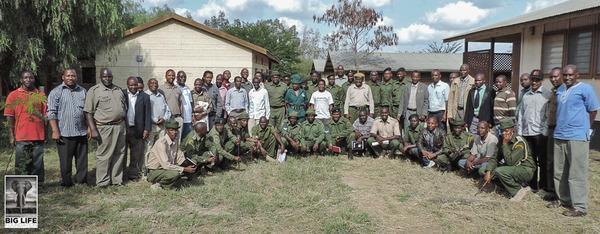
International borders are ridiculous things. Often designated by those in leather armchairs far away, they have historically injected senseless divisions into human communities and natural ecosystems. Animals have no regard for these imaginary lines, and neither do wildlife poachers.
When Big Life started our operations in the greater Amboseli ecosystem, we knew that the situation on both Kenyan and Tanzanian sides of the border was critically important.
In the past, poachers operating in Kenya would cross the border into Tanzania as a convenient way to avoid arrest. No longer - from early days in Big Life’s operations, some major long term poachers were finally arrested as a result of cross-border coordinated efforts between Big Life teams on the Kenya and Tanzania sides.
Just as important are the connections in the nature: wildlife populations need to move with the shifting resources such as water and grazing. The long-term vision of all involved in conservation is to link conservation areas. They will not survive as islands.
But cross-border issues go far beyond the jurisdiction of one organisation; success will require the cooperation of everyone involved.
As a major step forward to achieving this, last week Big Life hosted a workshop for relevant stakeholders in wildlife protection from both sides of the border. The aim was to create connections, and a proper system for coordinating operations on both sides of the border.
The day was attended by people from both countries’ local governments, communities, wildlife authorities, police forces, community game scout organisations, the African Wildlife Foundation (key partners and financial supporters of Big Life’s), and a few local cows.
National parks are critical for the conservation of African wildlife, but it is the spaces in between that will make the difference in the future. Through gatherings like this, we hope to create the foundation for the necessary coordination in cross-border conservation efforts.
